Science and Fiction Intertwine in ‘Underwater, On Fire’ at UCCA Clay
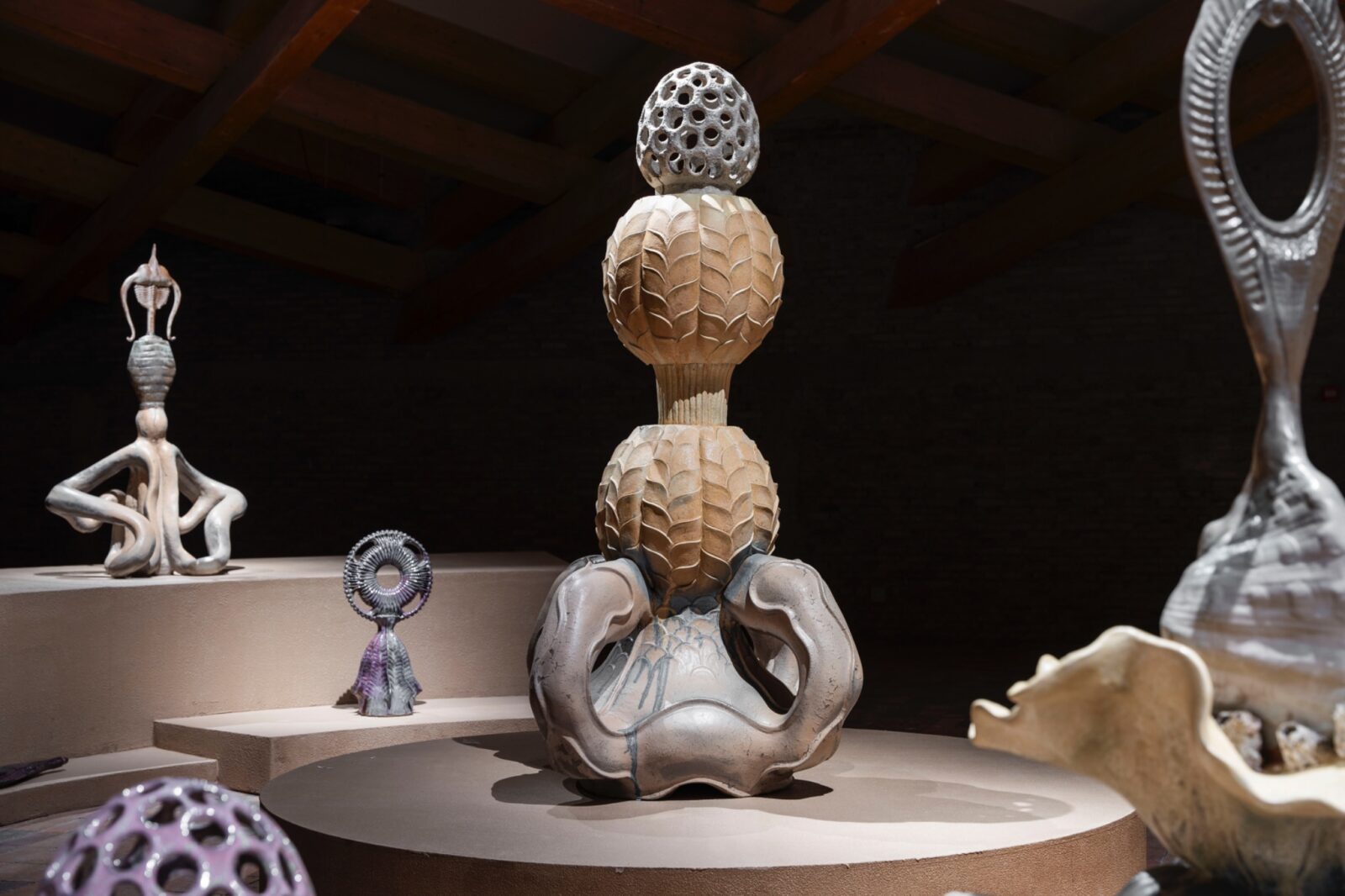
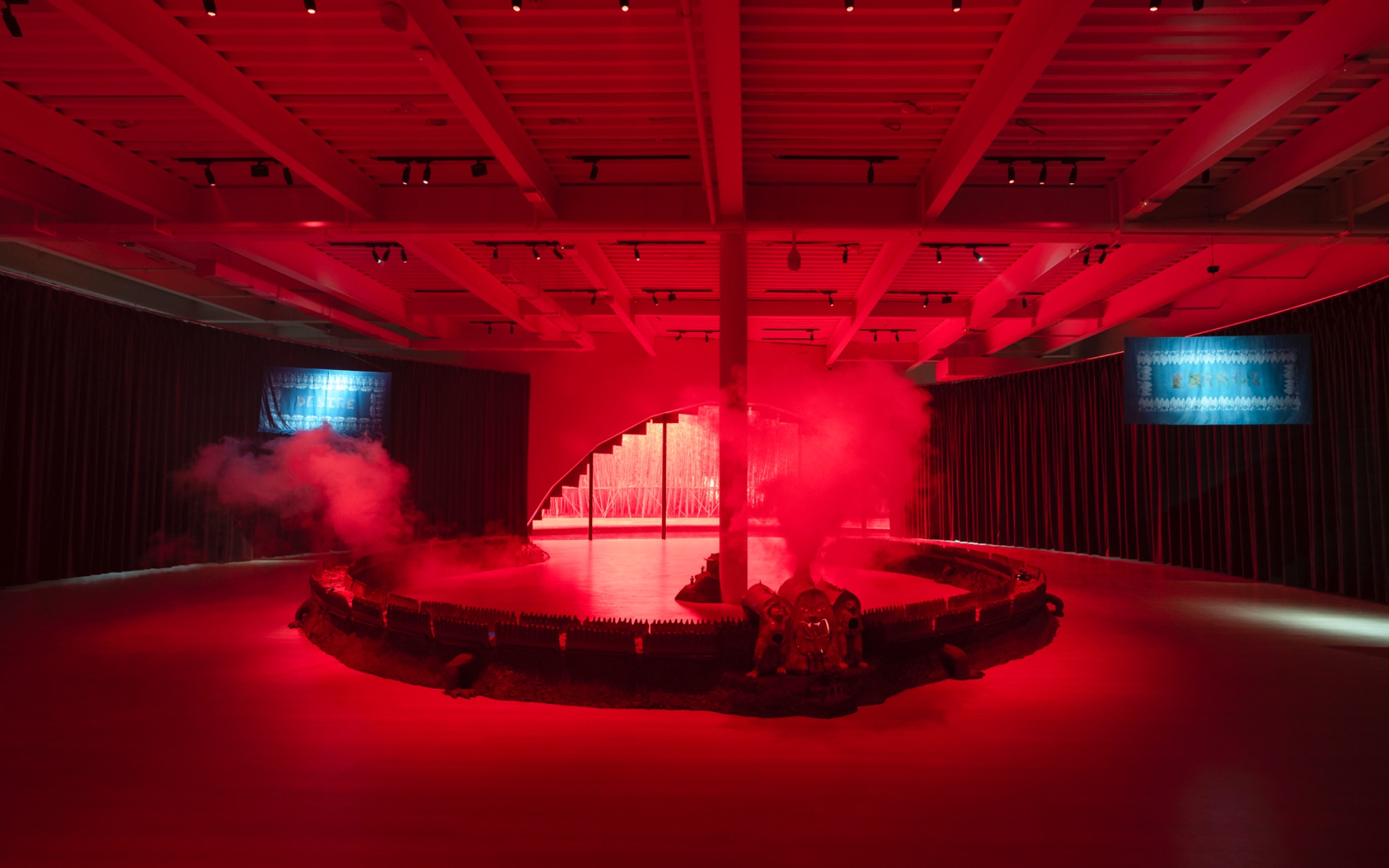
Located in Yixing, a city renowned for its purple clayware, in Eastern China, UCCA Clay’s mission is to connect contemporary art practices with the region’s ceramic history. Their newly opened building, designed by Kengo Kuma & Associates, nods, through some preserved details in its architecture, to the decommissioned ceramics factories that it replaces. In their latest two-person exhibition Underwater, on Fire, New York-based Shuyi Cao and Los Angeles-based Candice Lin were invited for month-long visits to Yixing, where they collaborated with local artisans, experimenting with new techniques in clay and exploring the area’s lore.
The experience of the show echoes its title, sensorially and spatially: Lin’s presentation in the ground-floor space is suffused with red light, like a kiln mid-firing; the upper gallery hosting Cao’s installation evokes the remnants of a shipwreck inhabited by water deities. Though their works are researched and conceived separately both artists present clay as earthy, bodily, malleable yet tenacious material while conjuring mythological worlds where science and fiction, local cultures and global politics, interrupt and intertwine with one another.
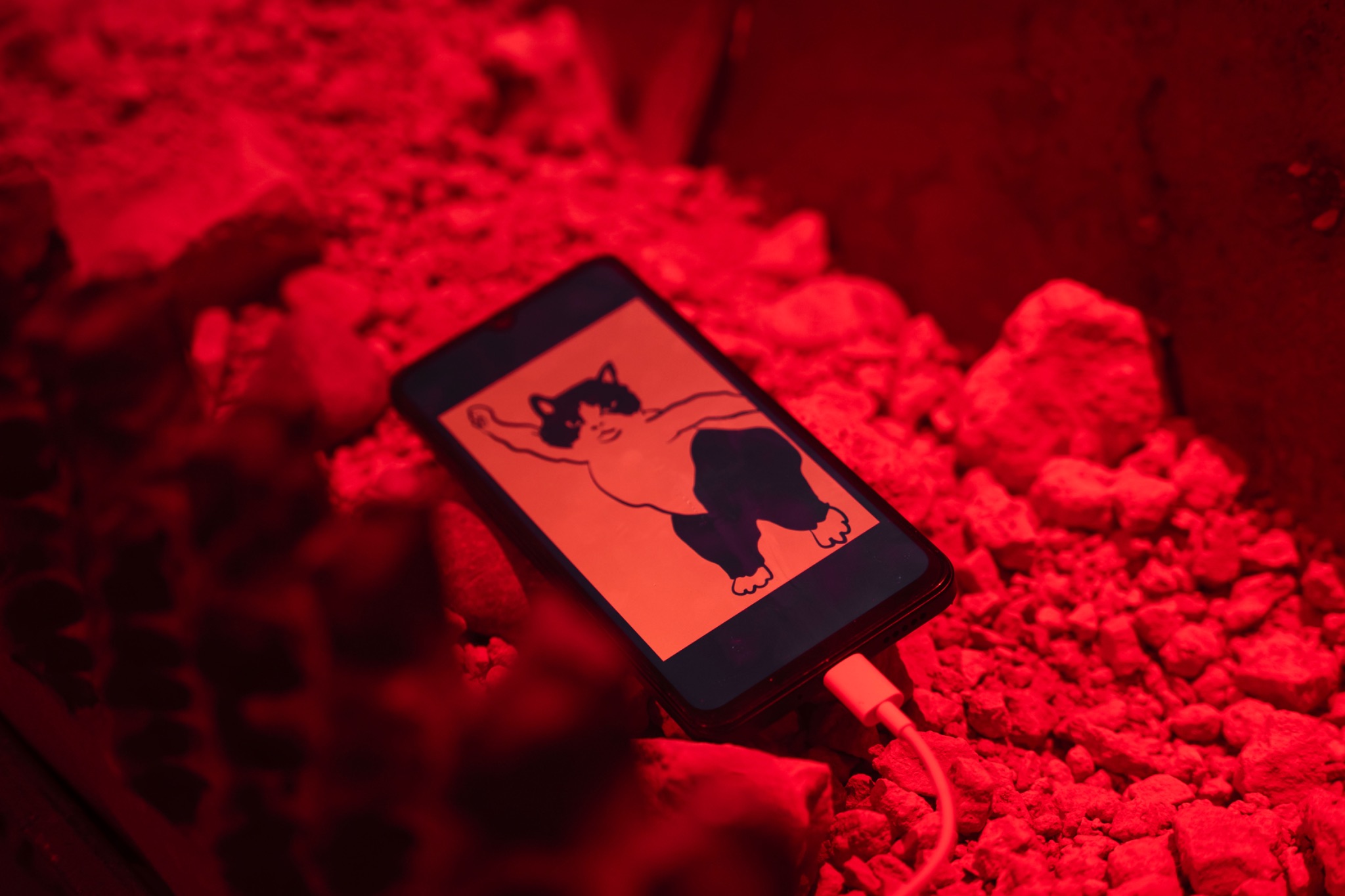
Lin’s site-specific installation Soul of the World (Iron Ouroboros) takes its form from the traditional dragon kiln of Yixing and the imagery of the ouroboros, encircling the exhibition hall. The space is darkened; fog seeps from the clay dragon’s body, permeating the air and blurring the theatrical scenery. Phones scattered across the installation play looping animations of protests but are sometimes cut off by cat memes, while the sounds of police sirens are disrupted by electronic music. The message is explicitly political—the anxiety of witnessing is clogged by messy online information, intensifying the ambiguity and uncertainty of making sense of our current global situation.
In many of Lin’s works, minerals thread through their material properties and cultural meanings. Iron, an element crucial to both the human body and the local purple clay, becomes a metaphor of resistance in Soul of the World (Iron Ouroboros). The student protests on U.S. campuses reminded Lin of Langston Hughes’s poem Kids Who Die: “the kids who die are like iron in the blood of the people—and the old and rich don’t want the people to taste the iron of the kids who die, don’t want the people to get wise to their own power.” Iron Ouroboros, as a symbol of transformation and regeneration, alludes to the power and possibility of making changes to the present.
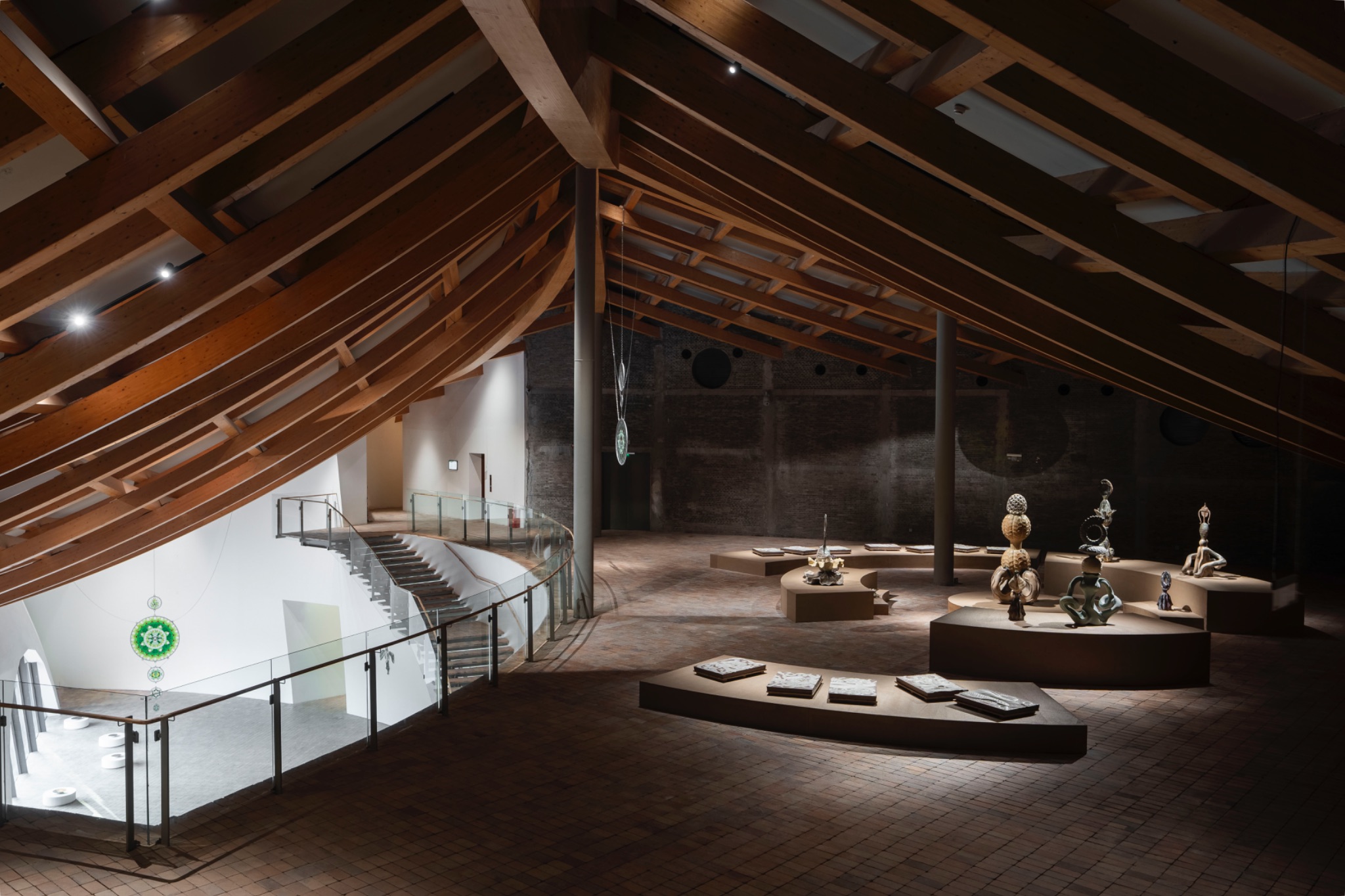
The architectural structure of UCCA Clay’s upper floor—with its wooden beams, slanted ceiling, and dim interior—becomes an underwater temple in Cao’s world-making, where ancient mythologies and modern sciences encounter. Clay statues of imagined water deities—Thalacora, Ammonora, Xurthra, Siphonura, and Gorgospina—are enshrined at the center of the space, their forms merging of fossils, microorganisms, marine animals, and totems from different mythologies. In Land of Discontinuity, images of fictional hybrid creatures appear fragmented across a set of relief clay tablets, resembling archaeological remnants from an unknown era. Cao seems to question the potential flattening of discrepancies in archaeological research through the pursuit of historical continuity, and for her, deviation of established narratives is where imagination can emerge.
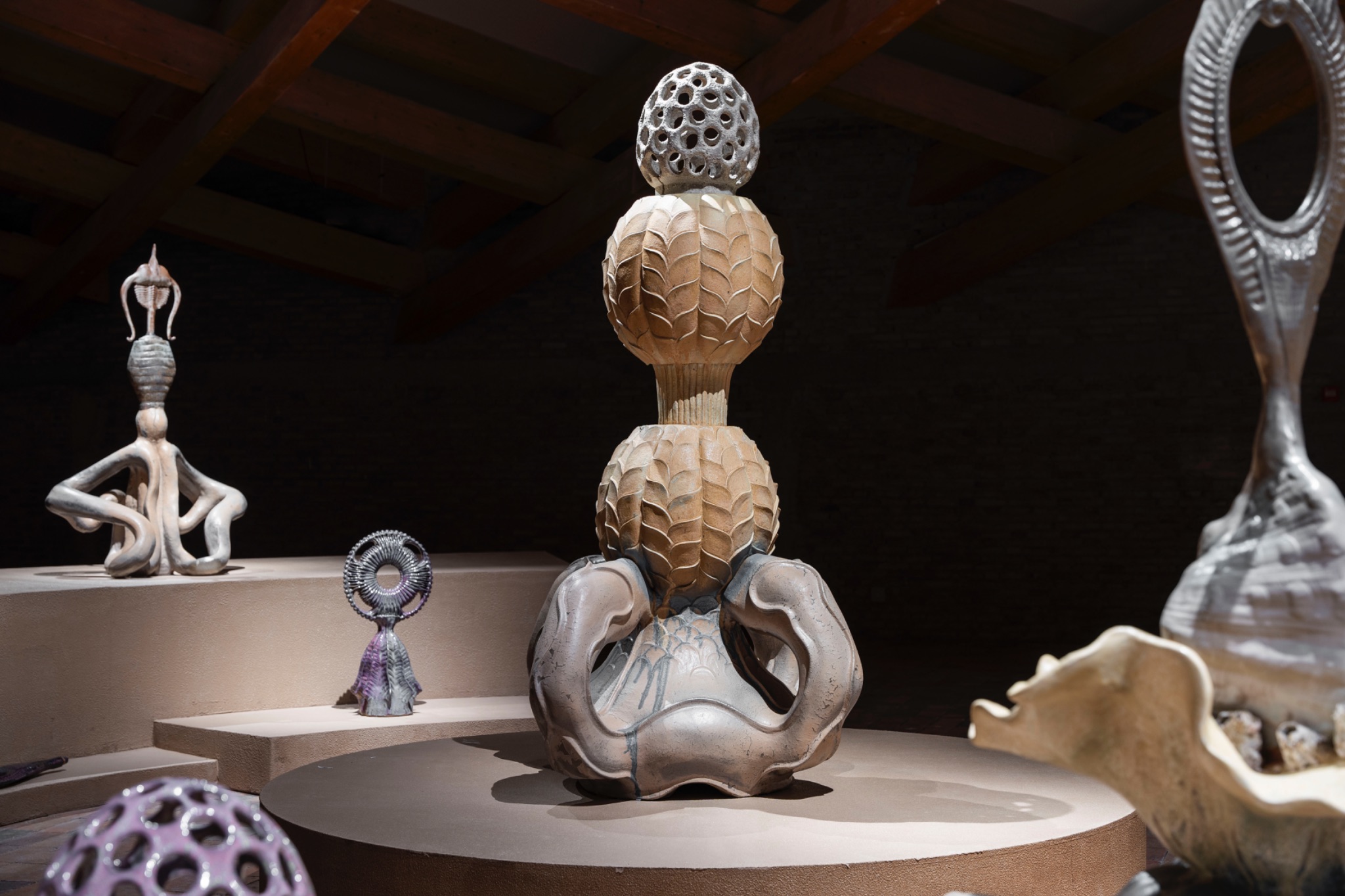
Cao’s video installation She From the Sky traces the disappearance of the Aral Sea, from the Soviet expeditions to today’s geoengineering on the desert landscape. The artist weaves her interviews with an archeologist, an ecologist, and an economist with water-related myths in Central Asia, creating a nonlinear narrative about humans’ century-long desire to control nature. In the video, the interviewees’ words seem to be solid and rational, yet Cao asks: Can an archeologist tell their own myth? While thinking of the mythological symbol ouroboros, Lin also recalls an anecdote: the chemist August Kekulé, in his search for the formation of benzene, had a vision of ouroboros that revealed to him the hexagonal shape of the benzene ring.
During Cao’s research in Uzbekistan, investigating the history of the Aral Sea, she encountered the Institute of the Sun—a futuristic infrastructure designed to concentrate solar energy. Her stained glass sculptures, Institute of the Sun #1 and Institute of the Sun #2 takes its name from the titular solar furnace, and is suspended from the ceiling and placed near the window and the staircases. Their patterns also reference scientific illustrations of green algae by naturalist Ernst Haeckel, drawing a parallel between the qualities of primitive life forms and the imperial imagination of energy accumulation.
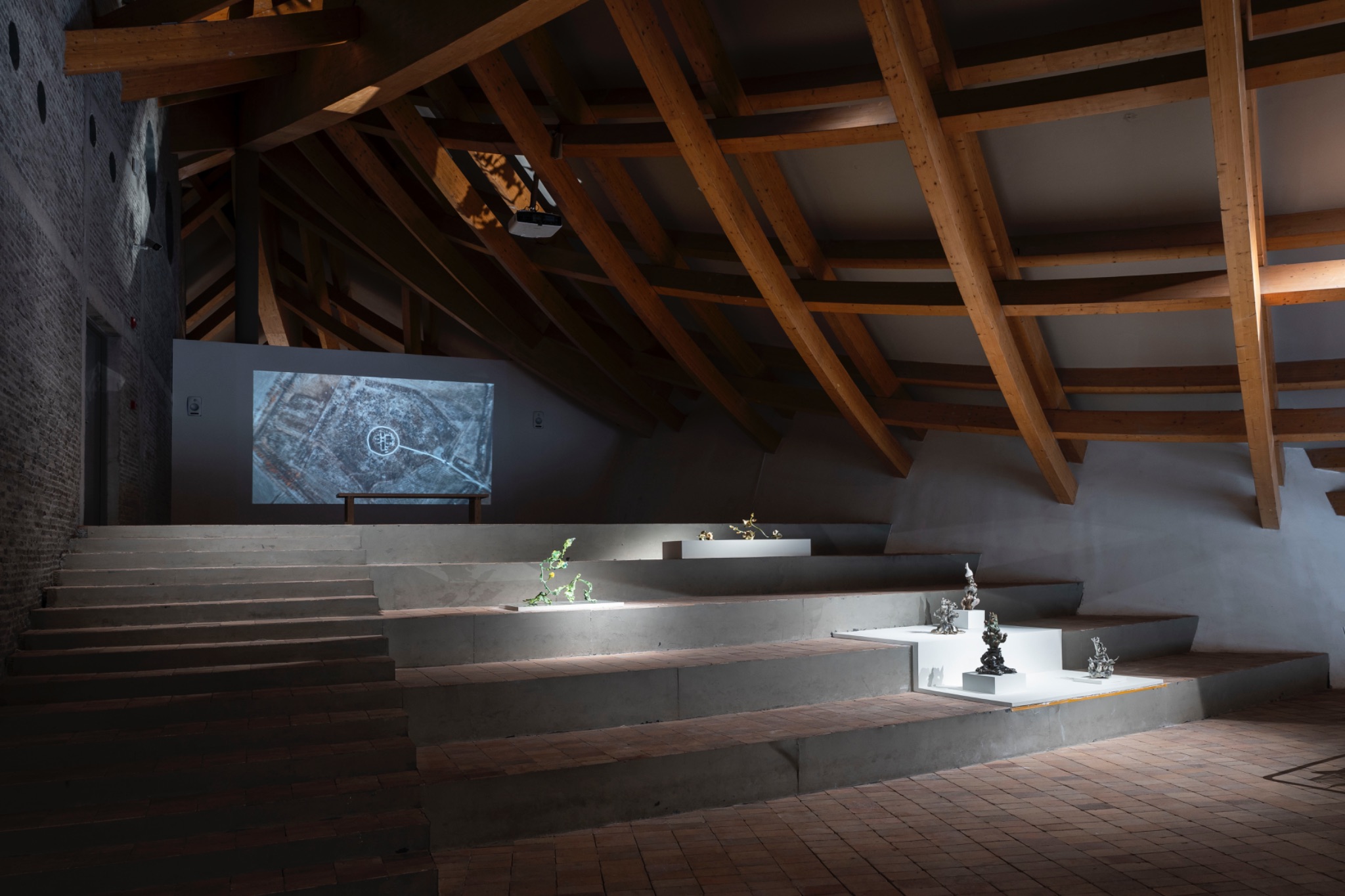
Although the exhibition presents two distinct environments under the same title, a dialog existed between the artists. Having followed both of them for several years, I found traces of their dialogue in Lin’s solo exhibition Lithium Sex Demons in the Factory at Canal Projects back in 2023: in the story Lin wrote for their installation, the sex demon’s lover is named Shuyi. Responding to this earlier tribute, Cao creates a fictional diary from her Uzbek research trip, in which the protagonist, Dr. Lin, goes on an oceanographic expedition. In both Cao and Lin’s art-making, fact and fabulation are displaced, and sciences dwell in the mystical and the speculative—a stage where cosmologies are intentionally entangled.
Shuyi Cao and Candice Lin: Underwater, on Fire was on view from July 5, 2025, to October 12, 2025 at UCCA Center for Contemporary Art, Yixing.
You Might Also Like
Recalling Nǚshū, a Secret Women’s Language, Poet JinJin Xu Knocks Words in Shanghai Exhibition
What's Your Reaction?
Yindi Chen is a curator and writer based in New York. Her research focuses on art practices related to the Anthropocene, ecofeminism, and queer ecology. She has contributed writings to The Art Newspaper China, C-print Journal, and Whitehot Magazine.

